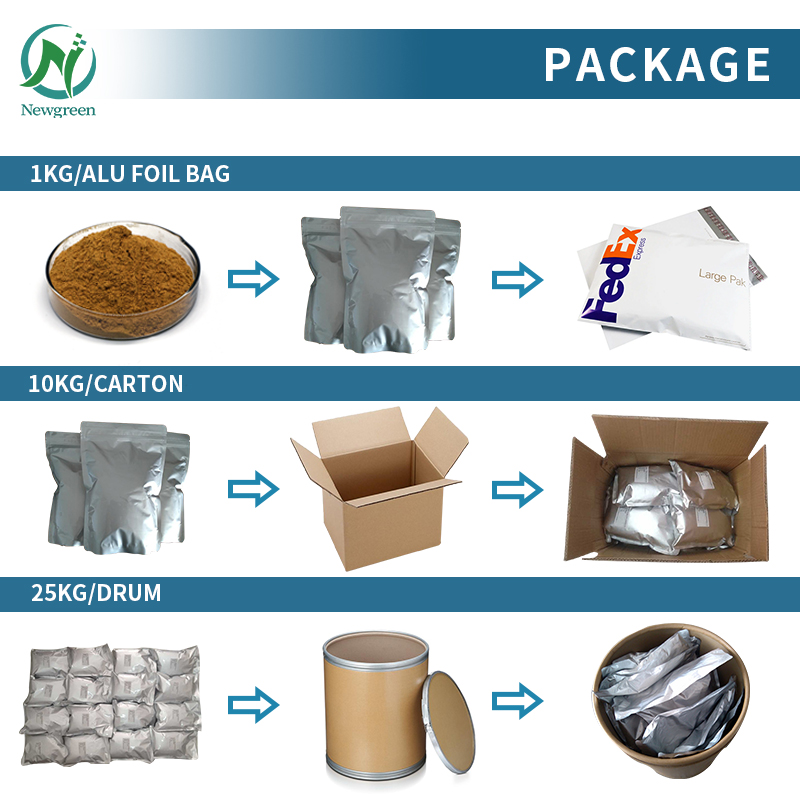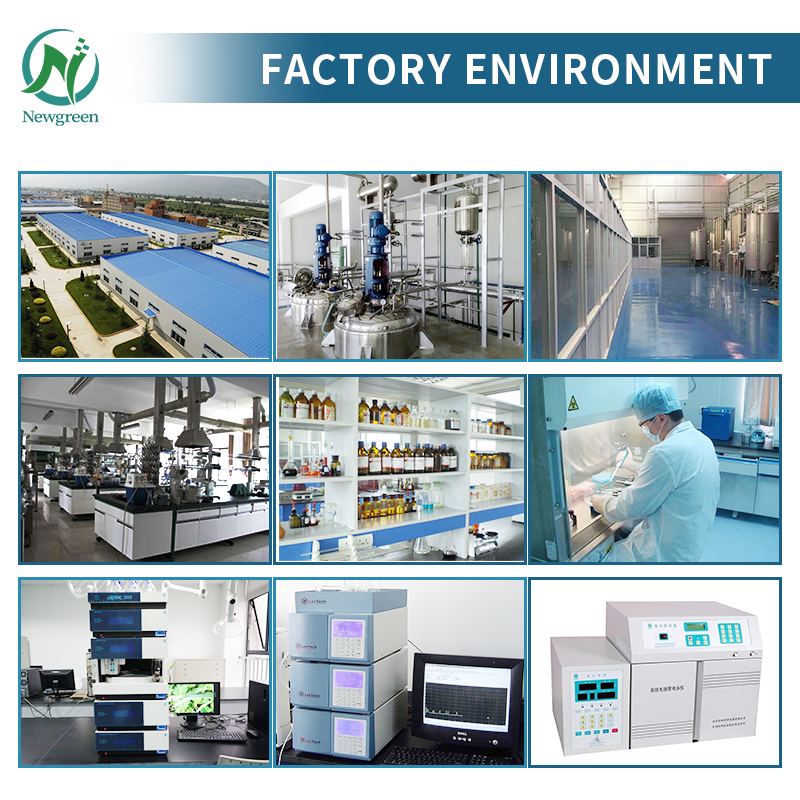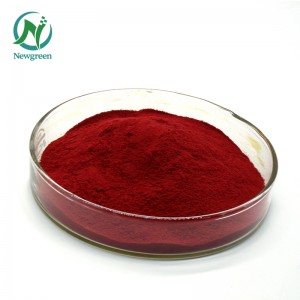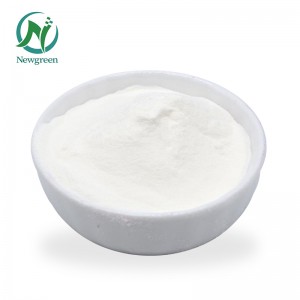Gellan gum Manufacturer Newgreen Gellan gum Supplement

Product Description
Gellan Gum, also known as Keke glue or Jie cold glue, is primarily composed of glucose, glucuronic acid, and rhamnose in a ratio of 2:1:1. It is a linear polysaccharide composed of four monosaccharides as repeating structural units. In its natural high acetyl structure, both acetyl and glycuronic acid groups are present, located on the same glucose unit. On average, each repeating unit contains one glycuronic acid group and every two repeating units contain one acetyl group. Upon saponification with KOH, it is transformed into low acetyl cold adhesive. The glucuronic acid groups can be neutralized by potassium, sodium, calcium, and magnesium salts. It also contains a small amount of nitrogen produced during fermentation.
COA
| Items | Specifications | Results |
| Appearance | White Powder | White Powder |
| Assay | 99% | Pass |
| Odor | None | None |
| Loose Density(g/ml) | ≥0.2 | 0.26 |
| Loss on Drying | ≤8.0% | 4.51% |
| Residue on Ignition | ≤2.0% | 0.32% |
| PH | 5.0-7.5 | 6.3 |
| Average molecular weight | <1000 | 890 |
| Heavy Metals(Pb) | ≤1PPM | Pass |
| As | ≤0.5PPM | Pass |
| Hg | ≤1PPM | Pass |
| Bacterial Count | ≤1000cfu/g | Pass |
| Colon Bacillus | ≤30MPN/100g | Pass |
| Yeast & Mold | ≤50cfu/g | Pass |
| Pathogenic Bacteria | Negative | Negative |
| Conclusion | Conform with specification | |
| Shelf life | 2 years when properly stored | |
Funtion
Gellan gum can be used as thickener and stabilizer.
The resulting gel is juicy, has good flavor release and melts in your mouth.
It has good stability, acidolysis resistance, enzymolysis resistance. The gel made is very stable even under the conditions of high pressure cooking and baking, and is also very stable in acidic products, and has the best performance under the conditions of pH value 4.0~7.5. The texture is not affected by time and temperature during storage.
Application
Cold adhesive can be used as a thickener and stabilizer. Usage precautions: This product is easy to use. Although it is not soluble in cold water, it disperses in water with slight stirring. It dissolves into a transparent solution when heated and forms a transparent and firm gel upon cooling. It is used in small quantities, typically only 1/3 to 1/2 of the amount of agar and carrageenan. A gel can be formed with a dosage of 0.05% (typically used at 0.1% to 0.3%).
The resulting gel is rich in juice, has good flavor release, and melts in the mouth upon consumption.
It exhibits good stability, resistance to acid and enzymatic degradation. The gel remains stable even under high-pressure cooking and baking conditions, and it is also stable in acidic products. Its performance is optimal at pH values between 4.0 and 7.5. Its texture remains unchanged during storage, regardless of changes in time and temperature.
Package & Delivery



















